Picture this: a frozen world smaller than Britain, locked in orbit around Saturn, casually shooting massive jets of water hundreds of miles into space. While we’re busy worrying about our daily water bills, Enceladus has been putting on the most spectacular fountain show in the solar system for millions of years. This isn’t science fiction – it’s happening right now, 746 million miles away from Earth.
The Surprising Discovery That Changed Everything
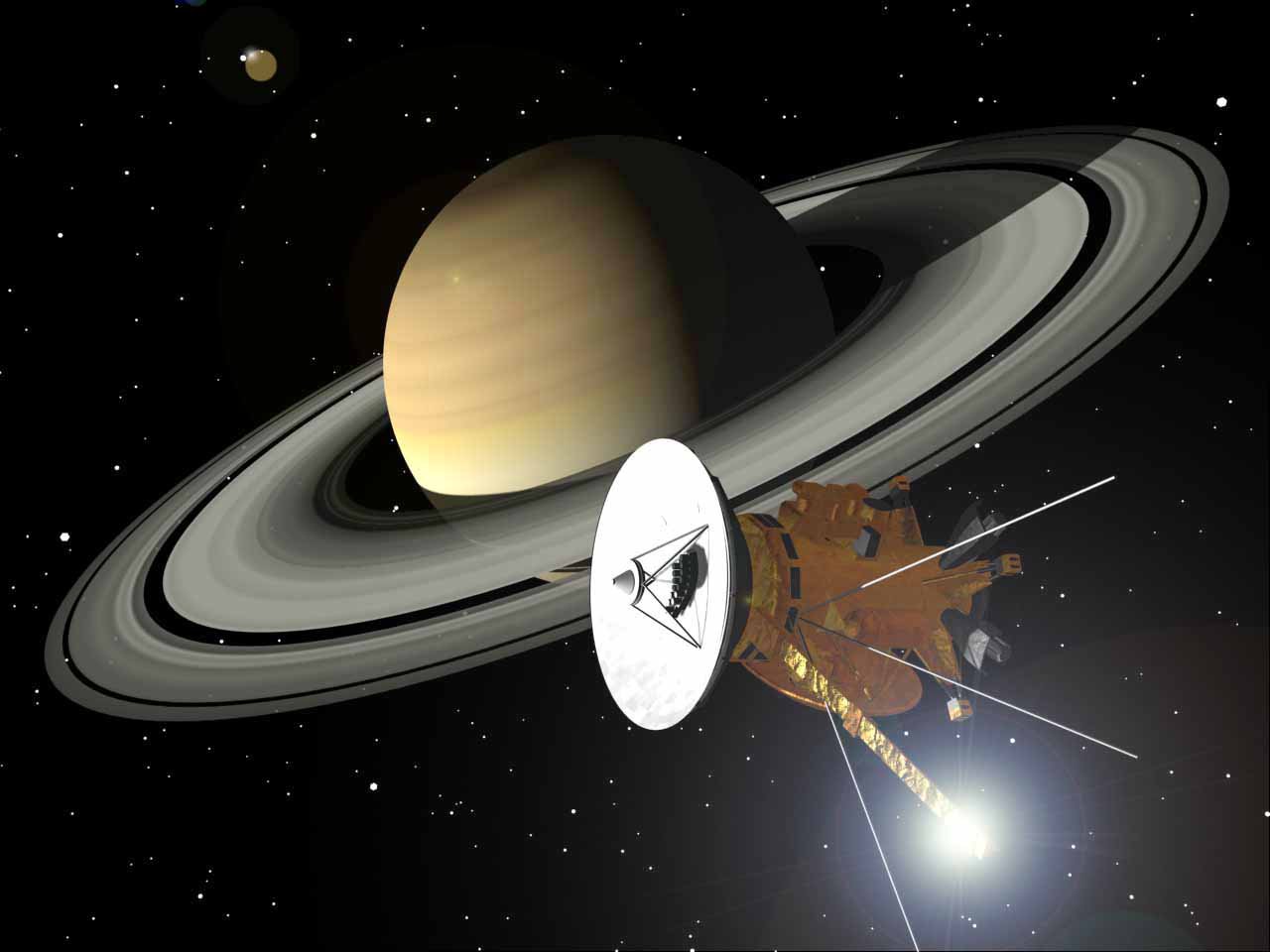
Back in 2005, NASA’s Cassini spacecraft was minding its own business, taking routine photos of Saturn’s moons, when something absolutely mind-blowing caught its attention. Scientists expected to see another boring, crater-covered ice ball. Instead, they witnessed towering geysers of water vapor and ice particles erupting from the moon’s south pole like cosmic fire hoses.
The discovery sent shockwaves through the scientific community. Here was a tiny moon, just 310 miles in diameter, actively spewing water into space with the force of multiple Old Faithful geysers combined. Nobody saw this coming, and it completely rewrote our understanding of what small, distant moons could do.
Saturn’s Sixth-Largest Moon Packs a Punch
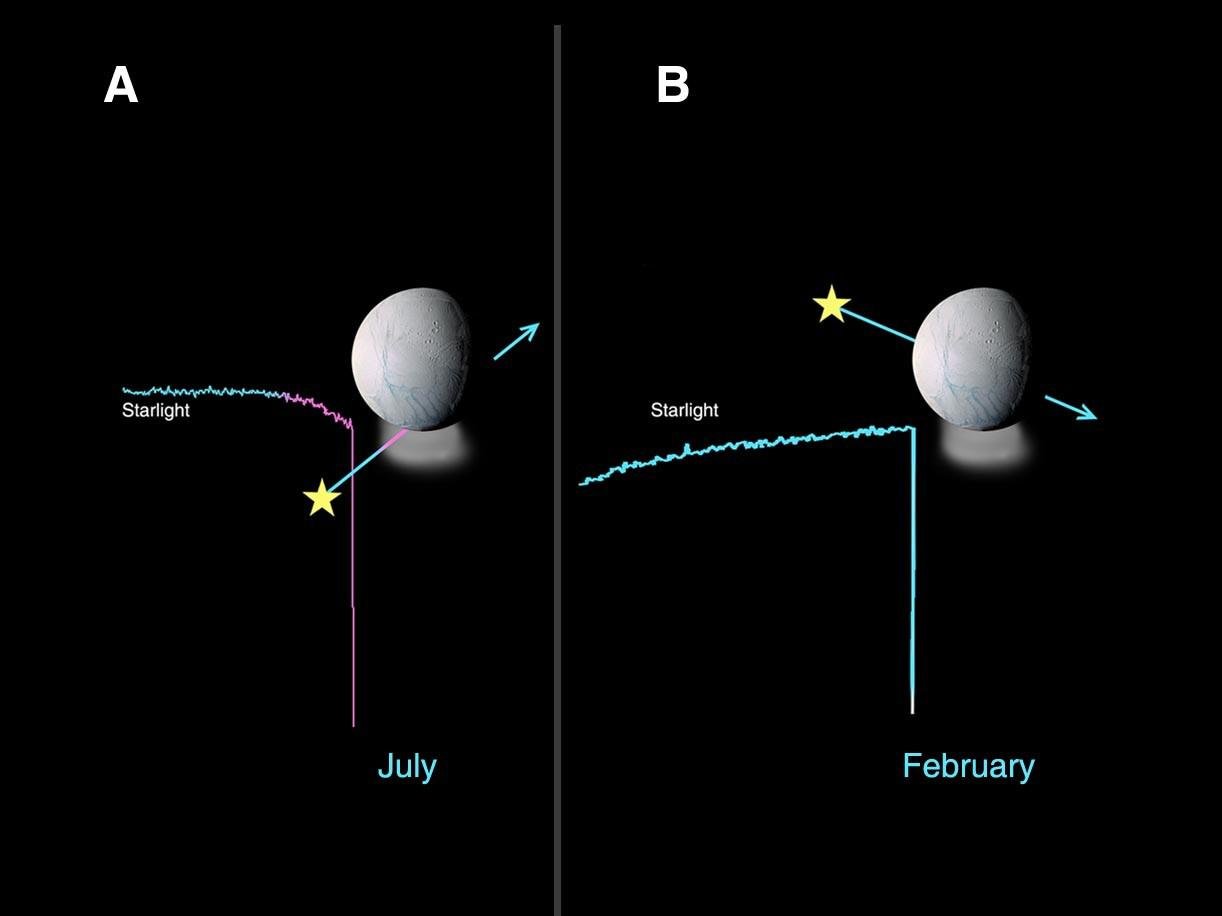
Enceladus might be small, but it’s got attitude. Named after a giant from Greek mythology who was buried under Mount Etna, this moon certainly lives up to its fiery namesake. It’s the sixth-largest of Saturn’s 146 known moons, which sounds impressive until you realize it’s only about one-seventh the size of our own Moon.
What makes Enceladus truly special isn’t its size – it’s what’s happening beneath that pristine, reflective surface. The moon’s icy exterior acts like a cosmic mirror, reflecting nearly 100% of the sunlight that hits it. This makes it one of the brightest objects in our solar system, gleaming like a pearl in Saturn’s gravitational embrace.
Despite receiving only 1% of the sunlight that Earth gets, Enceladus maintains enough internal heat to keep a global ocean liquid beneath its frozen shell. That’s like keeping a swimming pool from freezing in Antarctica – it takes serious energy.
The Magnificent Tiger Stripes

The most dramatic features on Enceladus are four parallel cracks near its south pole, nicknamed “tiger stripes” by scientists. These aren’t your typical moon scratches – they’re massive geological wounds that stretch for hundreds of miles across the surface. Each stripe is about 80 miles long and a mile wide, glowing with infrared heat like cosmic scars.
These tiger stripes are where the magic happens. They’re the source of those incredible water geysers, acting like natural plumbing systems that connect the hidden ocean below to the vacuum of space above. The stripes have wonderfully exotic names: Alexandria, Cairo, Baghdad, and Damascus – each one a gateway to an alien sea.
What’s truly remarkable is that these cracks are geologically active, constantly shifting and changing. Unlike the ancient, static features we see on most moons, the tiger stripes are alive with movement, heated by friction and tidal forces that keep them from freezing shut.
How Powerful Are These Water Jets?
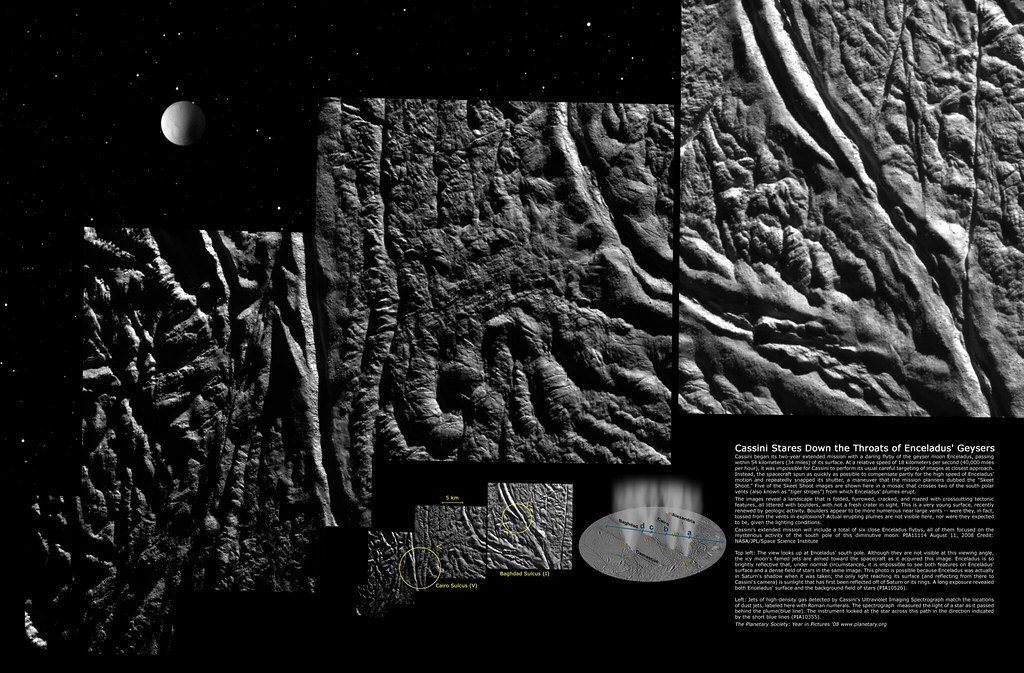
The geysers erupting from Enceladus aren’t gentle garden sprinklers – they’re cosmic fire hoses shooting water at speeds of up to 800 miles per hour. To put that in perspective, that’s faster than most commercial airplanes fly. These jets can reach heights of 300 miles above the moon’s surface, creating a massive plume that’s visible from hundreds of thousands of miles away.
The sheer volume of water being ejected is staggering. Scientists estimate that Enceladus shoots about 440 pounds of water vapor and ice particles into space every second. That’s roughly equivalent to emptying a standard hot tub every 30 seconds, continuously, for millions of years.
The most powerful individual jets have been measured shooting material at nearly 1,200 miles per hour. That’s fast enough to escape the moon’s weak gravity and contribute to Saturn’s E ring, a tenuous band of ice particles that Enceladus helps maintain through its constant volcanic activity.
The Hidden Ocean Beneath the Ice
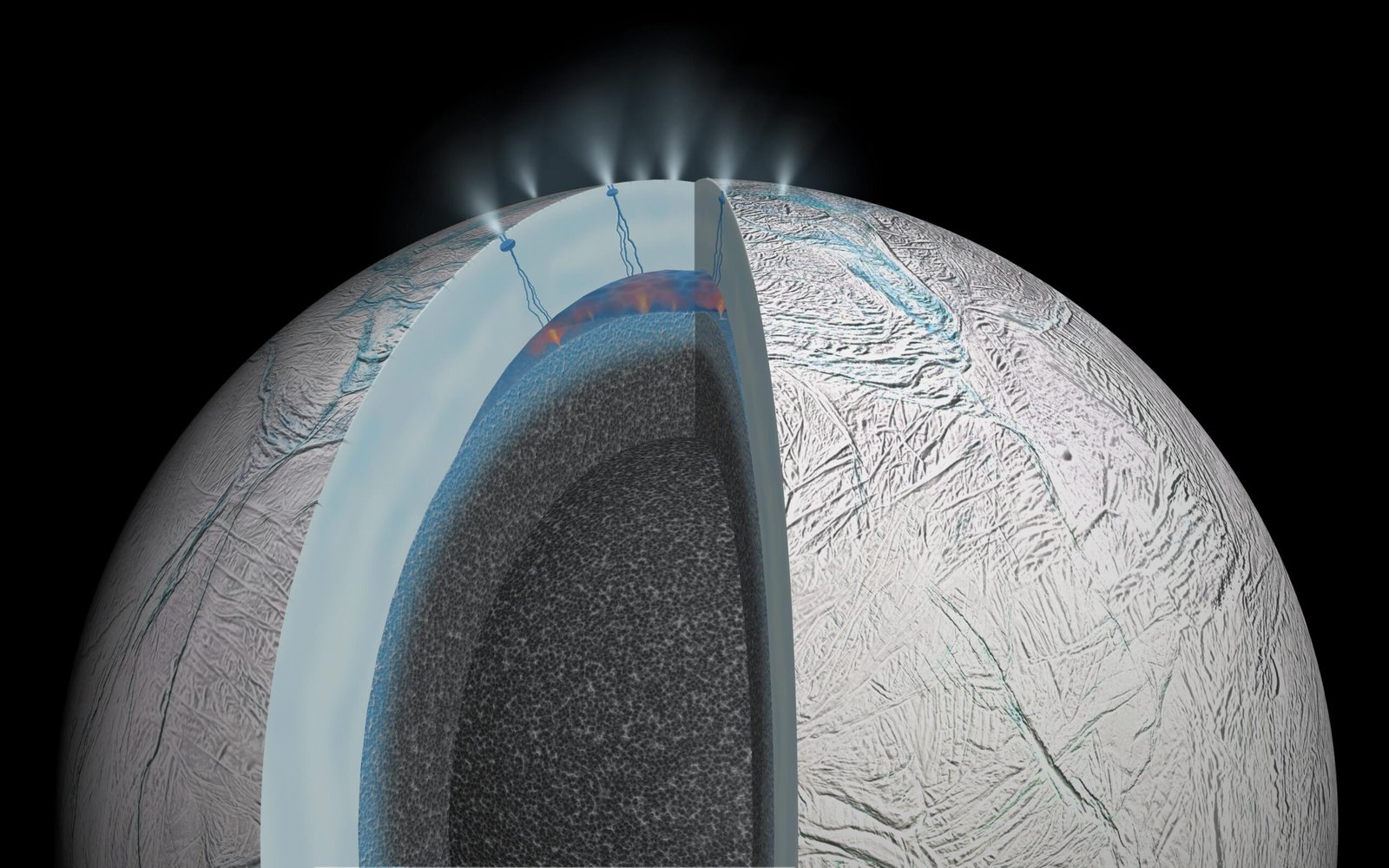
Beneath Enceladus’s icy shell lies something that makes science fiction writers weep with envy: a global ocean of liquid water. This isn’t a small underground lake – it’s a vast sea that completely encircles the moon, containing more water than all of Earth’s oceans combined. The ocean sits about 25 miles beneath the surface, protected by a shell of solid ice that acts like a cosmic pressure cooker.
This hidden sea is estimated to be about 6 miles deep on average, which might not sound like much until you consider that Earth’s oceans average only 2.3 miles in depth. The water is kept liquid by a combination of tidal heating from Saturn’s gravity and radioactive decay in the moon’s rocky core.
What makes this ocean even more exciting is its composition. It’s not just water – it’s a complex chemical soup containing dissolved salts, organic compounds, and possibly even the building blocks of life. The Cassini mission detected hydrogen gas in the geysers, suggesting chemical reactions between water and rock that could provide energy for living organisms.
Tidal Forces: Saturn’s Cosmic Massage

The secret behind Enceladus’s activity lies in its relationship with Saturn – a cosmic dance that’s been going on for billions of years. As the moon orbits Saturn, the planet’s immense gravity squeezes and stretches Enceladus like a stress ball. This constant flexing generates heat through friction, similar to how a bent paperclip gets warm when you flex it repeatedly.
The effect is amplified by Enceladus’s slightly elliptical orbit, which means the gravitational squeeze varies as the moon moves closer to and farther from Saturn. This creates a rhythmic pumping action that keeps the internal ocean liquid and drives the geological activity we see at the surface.
Saturn’s other moons also play a role in this cosmic massage. Dione, another of Saturn’s moons, locks Enceladus into a 2:1 orbital resonance – for every orbit Enceladus makes, Dione completes exactly two. This gravitational partnership ensures that Enceladus’s orbit remains elliptical, maintaining the tidal heating that powers its spectacular geysers.
The Chemistry of Life
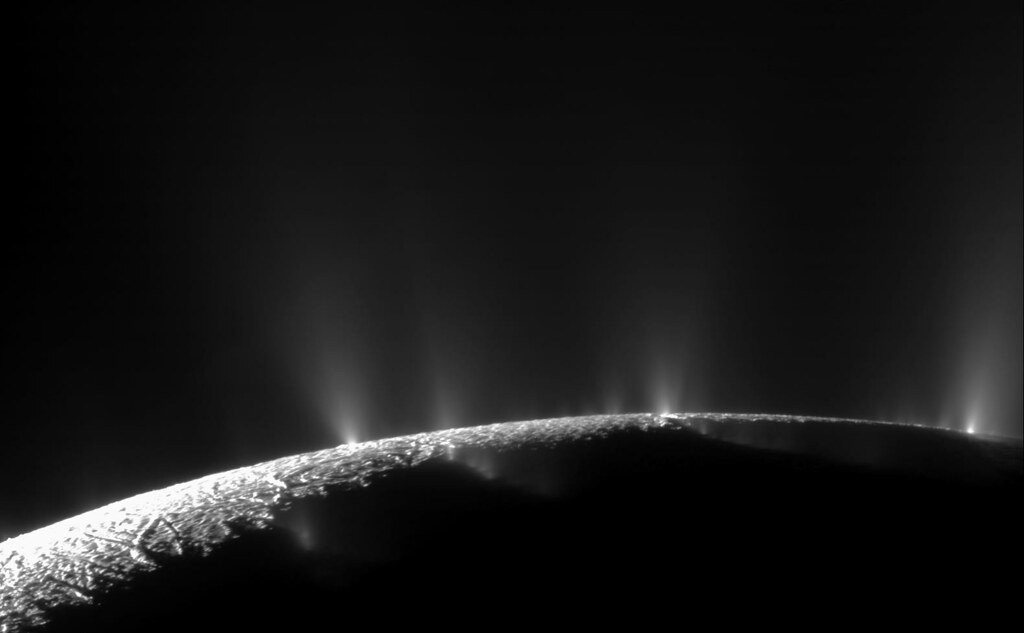
When Cassini flew through Enceladus’s geyser plumes, it didn’t just find water – it discovered a chemical treasure trove that made astrobiologists around the world do happy dances. The spacecraft detected hydrogen molecules, carbon dioxide, methane, and complex organic compounds. This isn’t just interesting – it’s the chemical foundation that life as we know it requires.
The presence of hydrogen is particularly exciting because it suggests hydrothermal activity on the ocean floor. On Earth, underwater hot springs teem with life, powered by chemical reactions between water and rock. If similar processes are occurring on Enceladus, they could provide the energy source that microorganisms need to survive.
Scientists have also detected silica particles in the geysers, which form when hot water interacts with rocky material at temperatures above 190 degrees Fahrenheit. This suggests that the ocean floor isn’t just cold and dead – it’s geologically active, with hot springs that could create the perfect conditions for life to emerge and thrive.
Comparing Earth’s Geysers to Enceladus
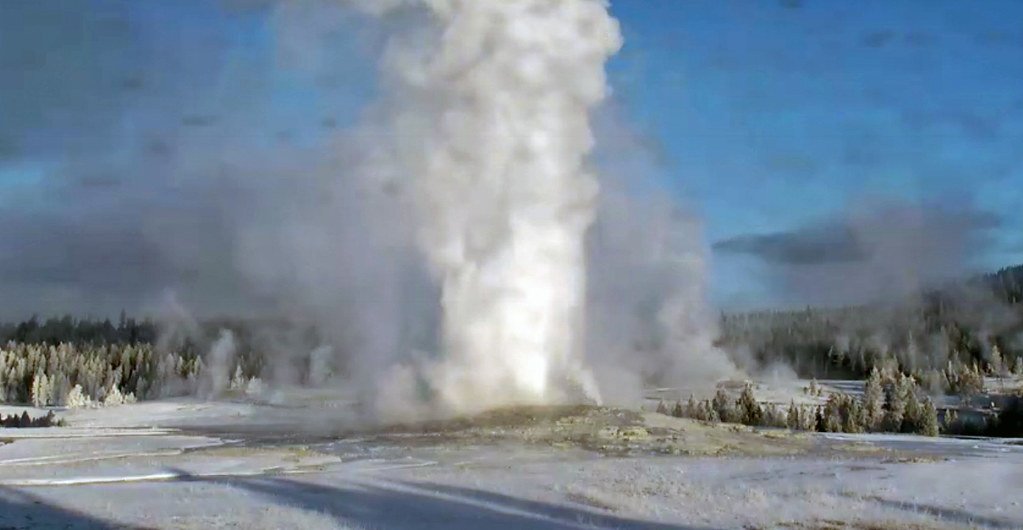
While Enceladus’s geysers are impressive, they’re not entirely unique – Earth has its own spectacular water displays. Yellowstone’s Old Faithful erupts about every 90 minutes, shooting water 180 feet into the air. But compared to Enceladus, Old Faithful is more like a decorative fountain in a shopping mall. The Enceladian geysers are thousands of times more powerful and operate in the vacuum of space.
Iceland’s geysers provide another interesting comparison. The original Geysir (from which we get the word “geyser”) can shoot water up to 230 feet high, but it’s powered by underground volcanic activity. Enceladus’s geysers are driven by tidal forces and internal heating, making them fundamentally different from anything we see on Earth.
What makes Enceladus truly special is the consistency of its activity. While Earth’s geysers are sporadic and can go dormant for years, Enceladus has been continuously erupting for millions of years. It’s like having a reliable cosmic fountain that never needs maintenance or repair.
The Temperature Surprise
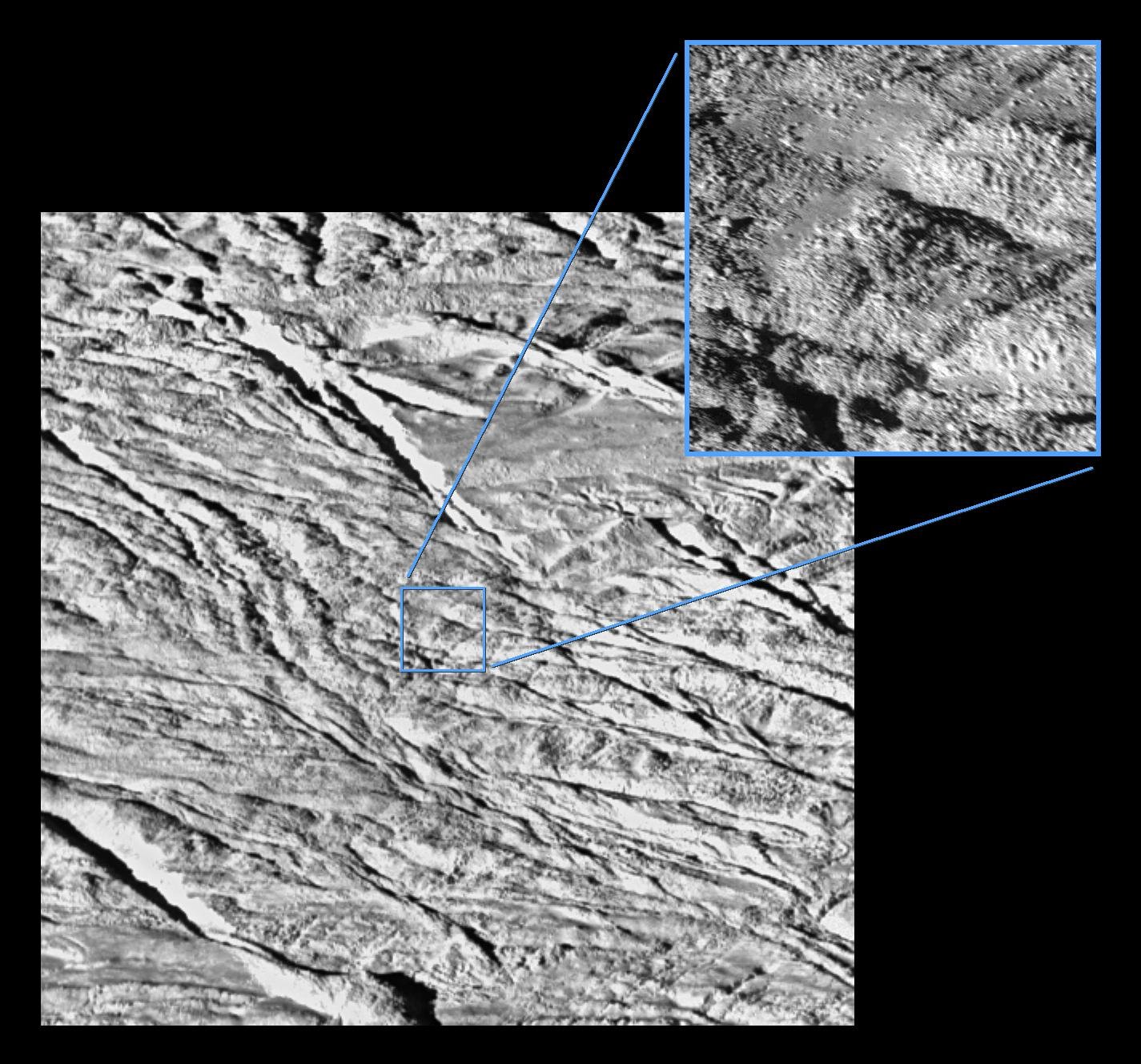
You might expect a moon orbiting Saturn to be absolutely frigid, and you’d be mostly right. The average surface temperature on Enceladus is about -330 degrees Fahrenheit, cold enough to freeze nitrogen solid. But here’s where things get interesting – the tiger stripe regions are much warmer, reaching temperatures as high as -120 degrees Fahrenheit.
This temperature difference is huge in space terms. It’s like finding a tropical beach in Antarctica. The warm stripes create their own weather patterns, with water vapor sublimating from the ice and creating localized atmospheric conditions. These warm zones are where the geysers originate, heated by the friction of the flexing ice shell.
The temperature variations also create fascinating ice formations. Some areas of the tiger stripes show evidence of recent ice flows, where warm subsurface water has erupted and quickly frozen into complex crystalline structures. It’s like having a cosmic art gallery where Saturn’s gravity is the artist.
Cassini’s Revolutionary Discoveries
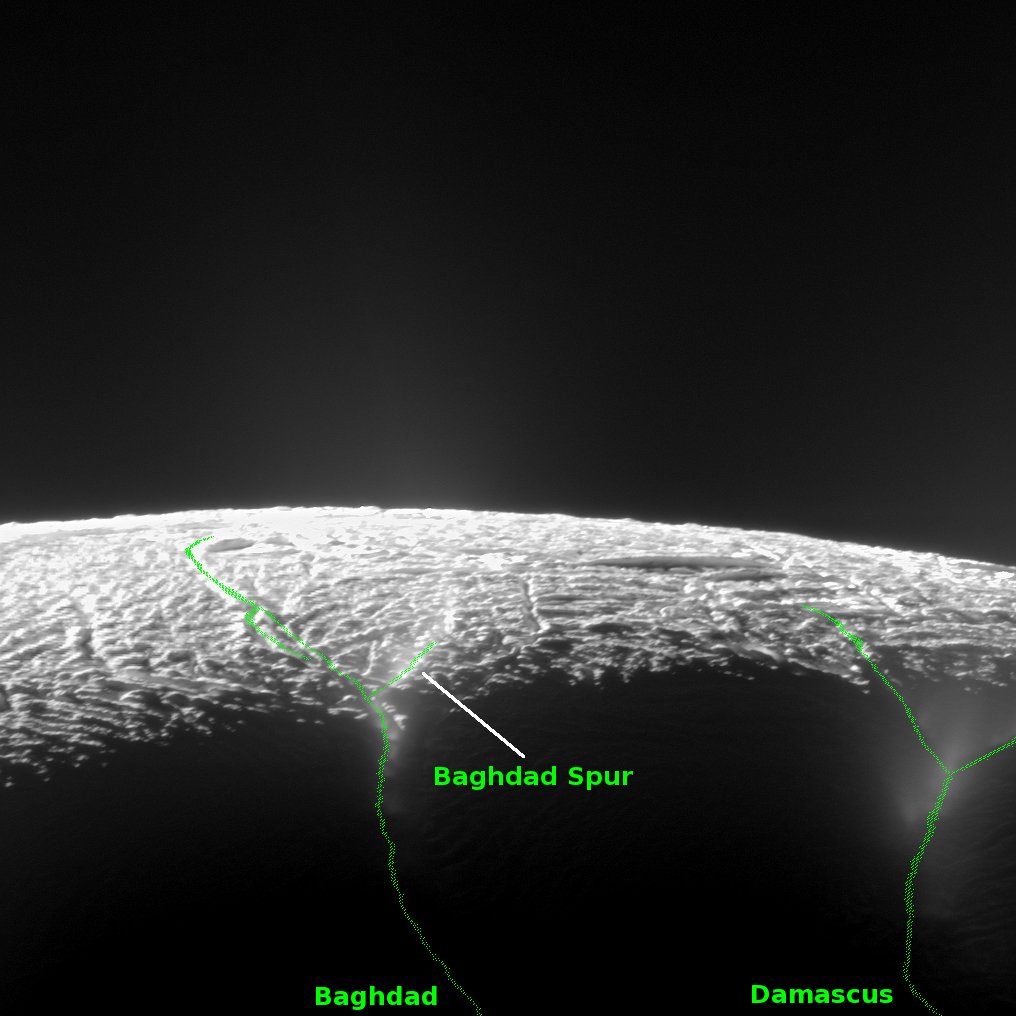
The Cassini spacecraft was humanity’s eyes and ears at Saturn for 13 incredible years, from 2004 to 2017. Its discoveries about Enceladus completely revolutionized our understanding of the moon and its potential for harboring life. The spacecraft made 23 close flybys of Enceladus, some coming within just 15 miles of the surface – close enough to fly through the geyser plumes and directly sample their contents.
One of Cassini’s most dramatic discoveries was the detection of salt in the geysers. This wasn’t just any salt – it was the same type found in Earth’s oceans, suggesting that Enceladus’s hidden sea is in direct contact with a rocky seafloor. This rock-water interaction is crucial for creating the chemical conditions that could support life.
The spacecraft also measured the exact composition of the ice particles in the geysers, revealing they contain trace amounts of ammonia, organic compounds, and even tiny silica particles. Each flyby provided new clues about the moon’s internal structure and the processes driving its remarkable activity.
The Search for Alien Life
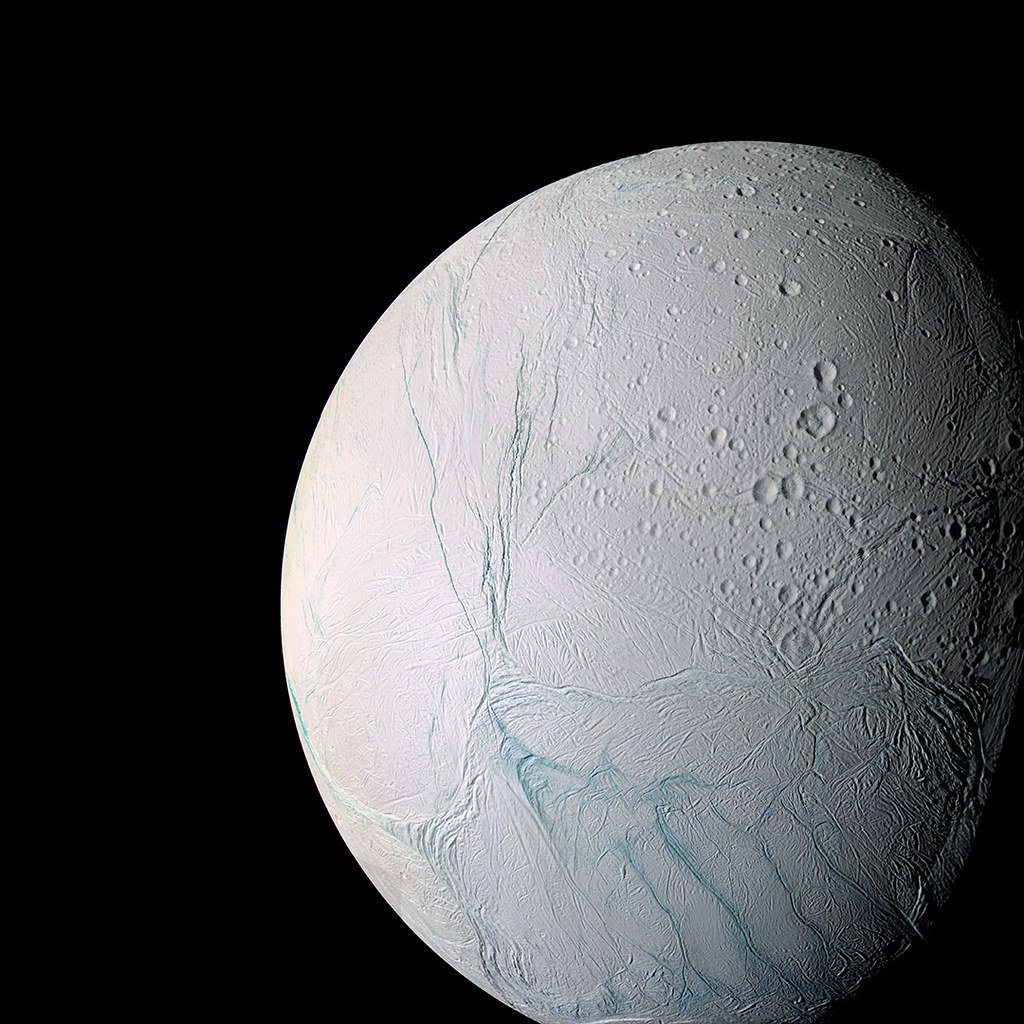
Enceladus has become one of the most promising places in our solar system to search for extraterrestrial life. The moon checks all the boxes that scientists look for: liquid water, organic compounds, and an energy source. It’s like a cosmic recipe book for life, with all the ingredients neatly listed and mixed together in a hidden ocean.
The discovery of hydrogen in the geysers was particularly exciting because it suggests the presence of hydrothermal vents on the ocean floor. On Earth, these underwater hot springs support entire ecosystems of unique organisms that don’t depend on sunlight for energy. They get their power from chemical reactions, a process called chemosynthesis.
If microorganisms do exist in Enceladus’s ocean, they might be getting ejected into space through the geysers. This means we might be able to detect alien life without even landing on the moon – we could simply fly through the plumes and analyze what we find. It’s like having the ocean come to us for sampling.
Formation and Early History
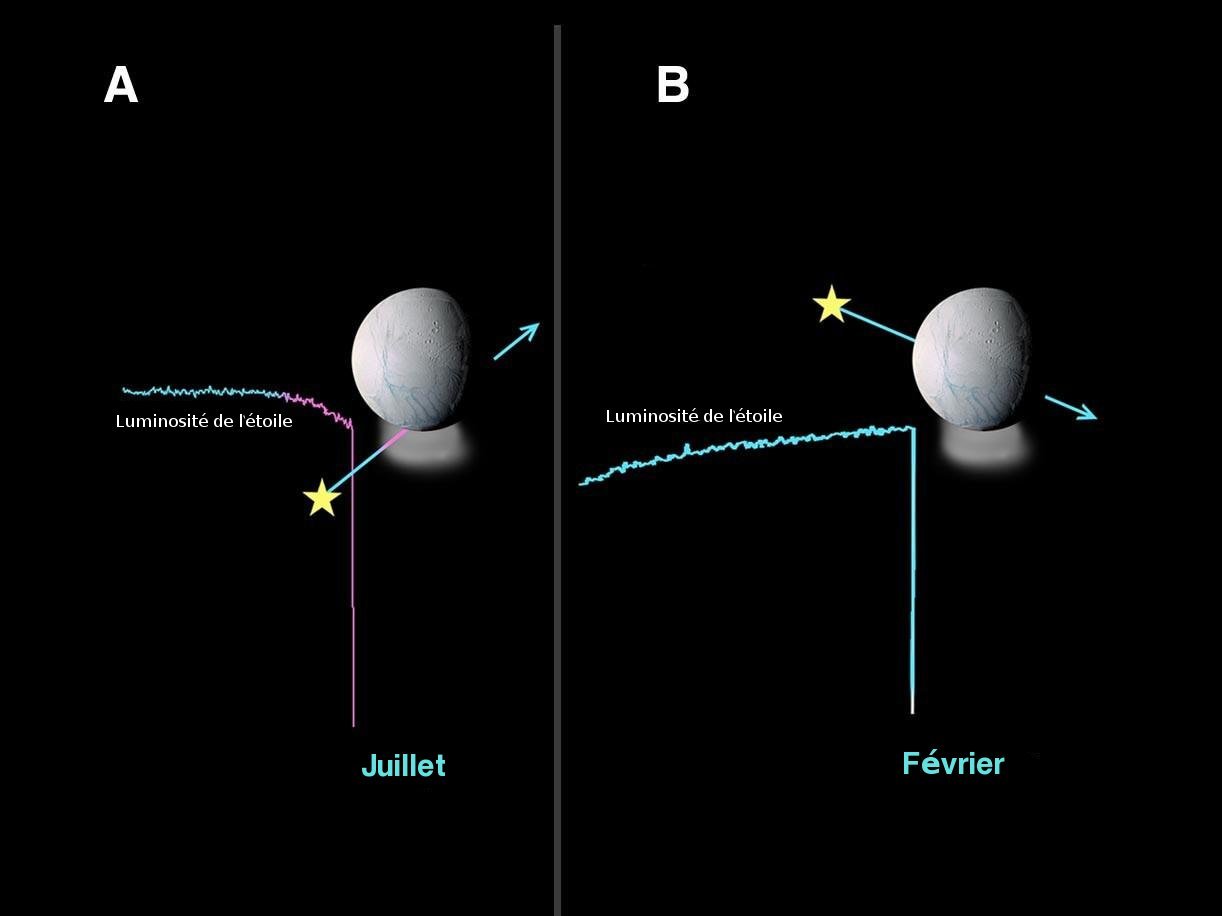
Enceladus formed about 4.5 billion years ago from the same disk of material that created Saturn and its other moons. Initially, it was probably just another cold, dead ice ball – unremarkable and boring. But its position in Saturn’s system and its relationship with other moons set the stage for something extraordinary.
The key to Enceladus’s transformation was its capture into orbital resonance with Dione. This gravitational partnership prevented the moon’s orbit from becoming circular, maintaining the elliptical path that creates the tidal heating we see today. Without this cosmic coincidence, Enceladus would likely still be a frozen, inactive world.
Scientists believe the current level of geological activity on Enceladus might be relatively recent, perhaps starting within the last 100 million years. This suggests that the moon has experienced periods of dormancy and activity throughout its history, like a cosmic hibernation cycle powered by orbital dynamics.
The E Ring Connection
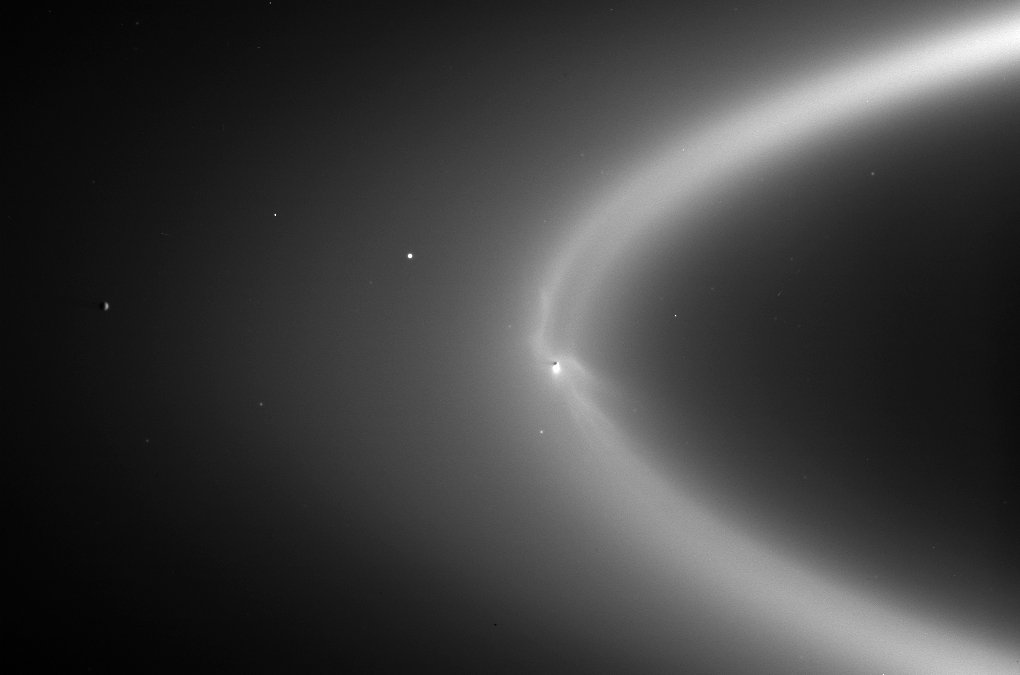
Saturn’s E ring is one of the most diffuse and mysterious rings in the solar system, and Enceladus is its primary architect. The ice particles ejected by the moon’s geysers spread out along its orbital path, creating a vast, tenuous ring that extends far beyond the moon itself. It’s like Enceladus is constantly dusting Saturn’s neighborhood with ice crystals.
The E ring is incredibly thin but remarkably extensive, stretching from about 112,000 to 300,000 miles from Saturn’s center. Most of the ring material comes directly from Enceladus’s geysers, making it a dynamic, constantly replenished structure. Without the moon’s continuous volcanic activity, the E ring would fade away within a few thousand years.
This ring connection means that Enceladus’s influence extends far beyond its own small sphere. The moon is actively shaping Saturn’s ring system, contributing to the complex gravitational dance that maintains the planet’s spectacular appearance. It’s a reminder that even small worlds can have outsized impacts on their cosmic neighborhoods.
Future Missions and Exploration
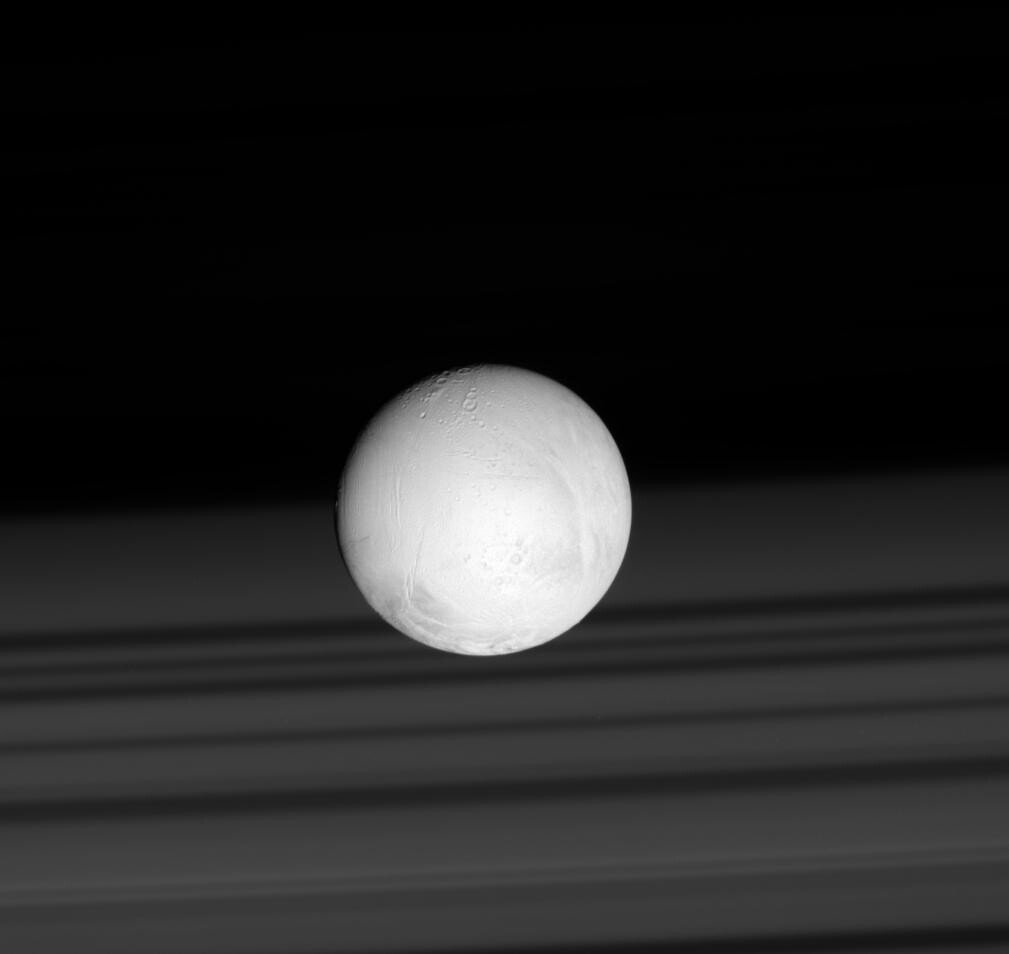
The scientific community is buzzing with plans for future missions to Enceladus. NASA has proposed several concepts, including orbiter missions that would make repeated flybys through the geyser plumes and even ambitious lander missions that would drill through the ice shell to directly sample the ocean below. These missions could answer the ultimate question: is there life in Enceladus’s hidden sea?
One particularly exciting concept is a “plume sampling” mission that would use advanced instruments to analyze the chemical composition of the geysers in unprecedented detail. Such a mission could detect biosignatures – chemical indicators of life – without the complexity and cost of landing on the surface.
The European Space Agency has also expressed interest in Enceladus exploration, potentially as part of a broader Saturn system mission. The technical challenges are immense, but the scientific payoff could be revolutionary – possibly answering one of humanity’s most profound questions about whether we’re alone in the universe.
What Makes Enceladus Special
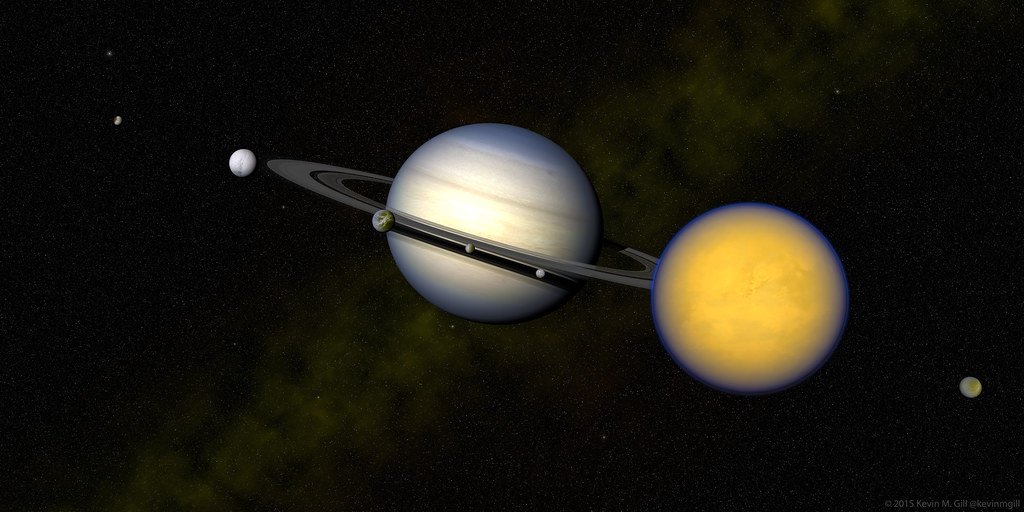
Among all the moons in our solar system, Enceladus stands out as something truly special. It’s not the largest, the most beautiful, or the most mysterious – but it’s the most hopeful. This small, icy world represents our best chance of finding life beyond Earth, not in some distant star system, but right here in our own cosmic backyard.
The moon’s combination of liquid water, organic compounds, and energy sources creates what scientists call a “habitable environment.” It’s not just theoretically possible for life to exist there – it’s actually plausible. The chemical conditions in Enceladus’s ocean might be similar to those in Earth’s primordial seas, where life first emerged billions of years ago.
What makes Enceladus even more remarkable is its accessibility. Unlike the subsurface oceans of Europa or Titan, Enceladus literally spits samples of its ocean into space through its geysers. It’s like having a cosmic laboratory that delivers its own specimens for analysis.
The Bigger Picture
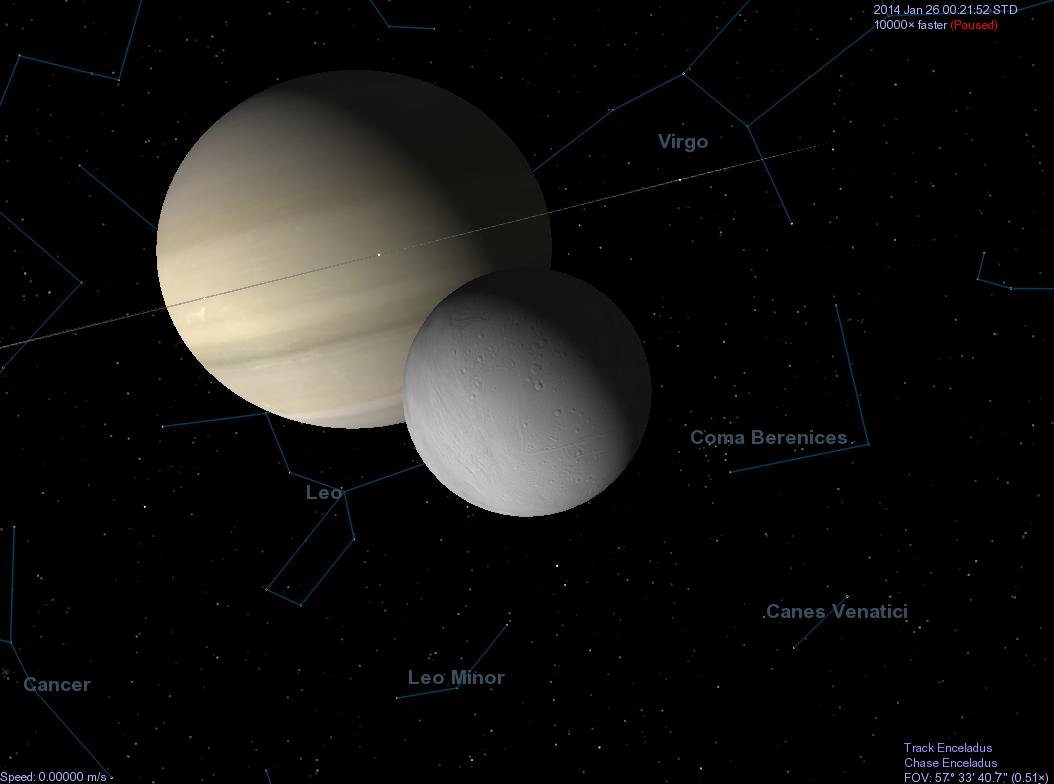
Enceladus has fundamentally changed how we think about habitable worlds in our solar system. Before its discovery, scientists focused primarily on planets in the “habitable zone” – the region around a star where liquid water could exist on a surface. Enceladus showed us that internal heating can create habitable conditions far from the sun, in places we never thought to look.
This discovery has implications that extend far beyond our solar system. If small, icy moons can harbor life, then the number of potentially habitable worlds in the universe is vastly larger than we previously imagined. Every star system with giant planets might have multiple moons like Enceladus, each with its own hidden ocean and potential for life.
The moon has also demonstrated the importance of tidal heating as a mechanism for maintaining liquid water over geological timescales. This process doesn’t depend on a star’s energy, meaning that habitable environments could exist around rogue planets drifting through interstellar space, or in solar systems where planets orbit far from their stars.
The Endless Fountain
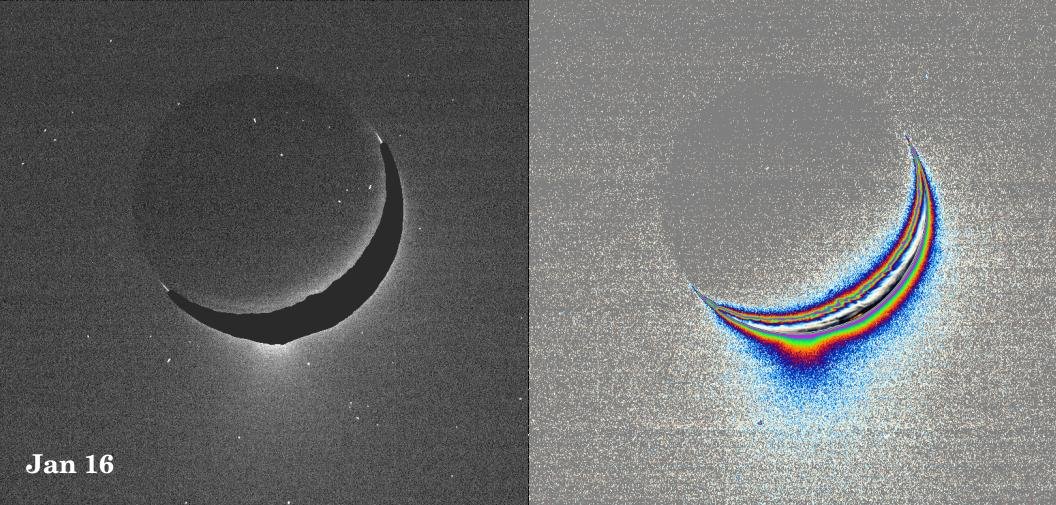
As we wrap up our journey through the wonders of Enceladus, it’s worth reflecting on what this small moon represents for humanity’s future. Here’s a world that’s been shooting water into space for millions of years, maintaining a global ocean beneath its frozen surface, and possibly harboring life forms that evolved completely independently from Earth. It’s a reminder that the universe is far stranger and more wonderful than we often imagine.
Enceladus challenges our assumptions about where life can exist and thrive. It suggests that the cosmos might be teeming with living worlds, hidden beneath ice shells and warmed by the gentle squeeze of gravity. The moon’s geysers aren’t just spectacular displays of natural forces – they’re beacons of possibility, shooting hope and wonder into the darkness of space.
Every time Saturn rises in our night sky, remember that somewhere in its gravitational embrace, a small icy moon is putting on the greatest water show in the solar system. Enceladus continues to erupt, continues to surprise us, and continues to hold secrets that might reshape our understanding of life itself. What other mysteries might be waiting in those towering jets of water and ice?




